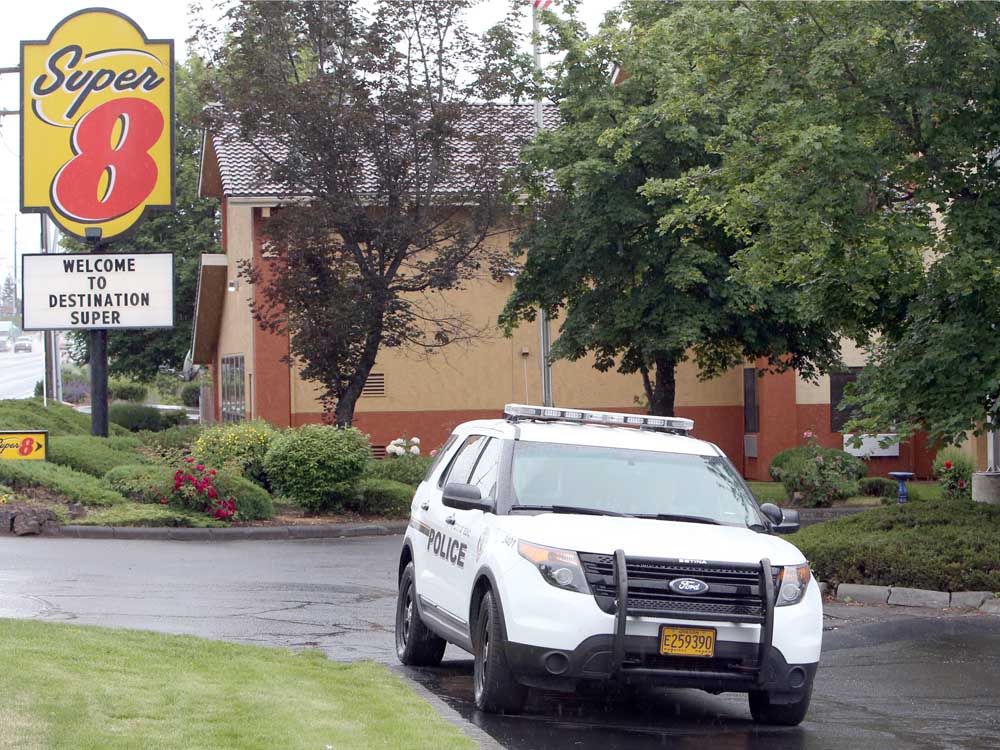St. Charles posts lower revenues in 2021
Published 4:00 pm Saturday, May 7, 2022

- Front entrance of St. Charles Bend, one of four hospitals in Central Oregon operated by St. Charles Health System.
Despite receiving millions of dollars in federal and state aid, St. Charles Health System finished 2021 in the red, showing a 1.4% operating loss because of fewer surgeries and higher labor costs.
The four hospital system had nearly 30% fewer surgeries in 2021 than 2020, said Matt Swafford, St. Charles Health System chief financial officer in an email.
“There was a lack of bed capacity and staff to care for patients after surgery,” Swafford said. “These limitations were due, at least in part, to the high number of COVID-19 patients in our facilities.”
Despite the bleak financial picture, the hospital system ended the 2021 with revenues 12.7% ahead year over year. And the hospital system expects the trends to continue into 2022, Swafford said.
Nearly half of the hospitals in Oregon, 42%, finished 2021 with a negative operating margin, according to the Oregon Association of Hospitals & Health Systems. The median operating margin in 2021 was 3.1%, down 30% since 2019.
The financial squeeze that St. Charles finds itself in is the result of a wage-price spiral, said Damon Runberg, Oregon State Employment Department regional economist. Businesses can only absorb the higher wage costs for so long before passing that on to consumers, which then leads to more inflation.
Demand needs to come down, Runberg said. To do that, the Federal Reserve has been raising interest rates to cut back on spending.
“We shall see if we can walk the tightrope of lowering inflation and avoiding a recession,” Runberg said. “Our largest employer (St. Charles) struggling financially is concerning for the regional economy. However, the long-term outlook for healthcare in Central Oregon remains bright. The region continues to grow and age, both strong tailwinds for continued growth in health care.”
Unprecedented patient loads, with many sick patients staying in the hospital longer, combined with a labor shortage, has taxed Oregon’s hospitals, said Dave Northfield, Oregon Association of Hospitals & Health Systems director of communications.
“Revenue has not kept up with rising costs, testing our hospitals like never before,” Northfield said. “St. Charles is not the only community hospital under financial stress, which will have effects on their ability to care for patients in their communities.”
The margins would have been even lower if not for one-time federal Coronavirus Aid, Relief, and Economic Security Act money hospitals included in the 2021 balance sheets.
“We are facing significant financial challenges as we have shared openly with our caregivers (workforce), providers and the community throughout the pandemic,” Swafford said. “The St. Charles leadership team believes that maintaining local control of the health system and independence is in the best interest in the community we serve.
At St. Charles labor costs have skyrocketed, Swafford said. At the four hospitals — Madras, Redmond, Bend and Prineville — it costs $70 million just on contract labor alone. That’s $12.7 million more than 2020. Currently, St. Charles has employed 166 travel nurses, or about 14% of the nursing staff.
Former St. Charles Health System board member Knute Buehler said St. Charles is an asset for the community. It not only has four hospitals, but it serves as a resource for a region that spans eight counties.
“The organization has struggled for years with operational challenges, staff morale, strained physician relations and adjusting to changes in healthcare,” Buehler said. “It appears the pandemic has exacerbated these problems to the point that financial viability is a concern.”
Jeremy Vandehey, Oregon Health Authority director of the Health Policy and Analytics Division, said it’s important to keep in mind that most Oregon hospitals are a nonprofit and have had years of up and down operating revenues and expenses.
Many hospitals have reserves and investment portfolios that they can tap into, Vandehey said.
“A negative revenue, in any given year, doesn’t raise any flags,” Vandehey said. “Most will have reserves they can tap into. It’s what’s under the hood of their finances that tell the picture.”
Statewide, hospitals have seen a return of revenues that match those earned pre-pandemic, he said.
It’s costs that have marched ahead. Hospitals will to take steps to reverse that course, he said.
At St. Charles, the hospital system has already begun that process.
To correct the revenue course, the hospital system will reevaluate all open positions and remove job postings for positions that can remain vacant as a way to offset costs. It also is expediting the service line structures between the St. Charles Medical Group and hospital operations to create efficiencies, streamline processes and boost patient experience and limiting incentive pay programs to only the times when patient care is affected.
“Hospital finances are a complex equation,” Vandehey said.






